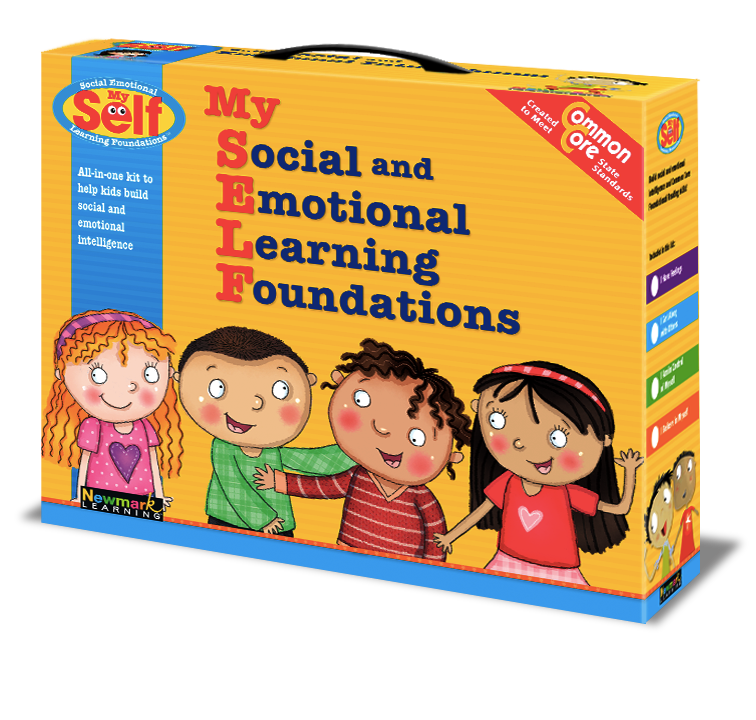- Benchmark Education
- Newmark Learning
- Reycraft Books
- Create an Account
Exchanging Heart Language: Moving Families and Educators from Acquaintances to Partners

by Jennifer S. Miller, M.Ed.
“If you talk to a man in a language he understands, that goes to his head. If you talk to him in his language, it goes to his heart.” — Nelson Mandela, Lead Liberator of South Africa
“If culture was a house, then language was the key to the front door to all the rooms inside.” — Khaled Housseini, Afghan American Author
The seismic changes in schools and in families ushered in over the past few years have shone a bright light on the role of parents and caregivers as essential teachers and partners in education. Teachers were dependent upon parents to get their students online and in a conducive learning environment during remote learning. As students returned to their buildings in person, parents and caregivers remained deeply invested in their success. Many students had experienced trauma as a way of life before the pandemic, but now all students added layers of trauma from the consequences of a global pandemic, creating a unique uneasiness as parents and caregivers sent their children back to school.
You could say these are hard times or you could say these are heart times — times that unmistakably, undeniably involve our hearts in showing up, in accepting and managing challenging emotions, and in growing and sustaining our nourishing relationships.
Schools are recognizing the vital role that social and emotional learning plays. As children feel safe and learn more about how to deal with their big feelings while creating healthy relationships, they can focus on and learn directly through those caring relationships. And we access one another through language. It’s our front door — our passageway for connection with students and with the families who love them. And if we don’t find the language that connects and resonates, we’ll lose our opportunities to build authentic partnerships that ultimately determine whether or not our child can learn in school. It’s just that important.
Schools are busy engaging staff in professional development. They’re asking important questions about how we can support our students who are bringing so many emotions and, for some, externalizing behaviors with them to school. And some are boosting, updating, or taking on new change initiatives like social and emotional learning to transform their buildings. What we know to be true from school change research is that how we speak with one another — and who we include in that talk — is the key to real change.
Indeed, researchers Hall and Hord found that they could identify whether or not a positive school change would last over time if they could document or observe the one-legged interview.1 This simply meant that a teacher passing another teacher in the hallway would mention the intended change — what they were learning about, how they were trying out new strategies — in passing in the amount of time it took to walk from one leg to the next, literally seconds. If, claimed the researchers, the change was a part of their everyday quick conversations, then they were wrestling with it in their minds and hearts. They’d internalized the intention and vision and were going to work collaboratively to bring it to life.
But that evidence comes from teachers who are able to run into each other in the hallway every single day. They can exchange encouraging words. But what about parents and caregivers who are essential members of the learning team — students, parents/caregivers, and teachers — who do not have that daily in-person contact? In fact, most schools have been shut down to parents and caregivers. Most are not allowing them in the building or limiting their building access as part of COVID policy. How do we involve families in the changes we are trying to bring about? It begins with language.
At the most basic level — though never easy or simple — we have to ensure that all school communications including the teacher's ability to connect with the parents and caregivers is in a language parents can fully understand. We know the work of ESL and Dual Language educators is vital to all teachers’ ability to be successful with their learning teams. But beyond translating materials into other languages, we have to consider how we make meaning together and deepen our connections. Here are some specific ideas for using heart language as a way to build authentic partnerships with families/caregivers.
Learning Authentic Names
Names are the first way that we come to truly see, understand, and value one another. Yet research has found (and did we really need research to tell us?) that most of us can’t recall names that we’ve heard once in a first meeting. Indeed, the fact that a person is a knitter or soccer player or loves gardening sticks in our memory much more readily than their name. And if a person’s name is one that is unfamiliar or sounds different to us, we are less likely to feel like we can accurately repeat it.
So how do we deal with this with families’ names? Ask for phonetic spellings of the name (spell as it sounds) in addition to the proper spelling when getting to know families (and it’s never too late to ask!). And then practice! Use name games with students and play them multiple times. Add family names to your name games after you learn students’ names so that all can become familiar with family names.
Be sure and ask questions of parents and caregivers about their jobs and interests and write them down next to their name to help seal in your memory. Create a poster or bulletin board in your classroom with family pictures and names. Offer lists of students' and teachers’ names to parents and caregivers with associated interests so they too can learn names. Ensuring our learning team knows the names of others in the classroom and school community is an important start in building our partnership.
Conducting Empathy Interviews
Names are an important first step, but they only have meaning if we build on them by learning about those individuals. In our first meeting as parents with our son and his middle school advisor, he asked first, “Who are you?" and he waited in silence to give our son time to think and speak. I so appreciated this simple beginning to our relationship and he proceeded to ask open questions to discover who my husband and I are as well. The idea of an empathy interview is to find out who people are and what’s most important to them. This is ideally in person but could take place on a Zoom call, on a phone call, or even in an audio recording or in writing. Simple questions like “How do you spend your time? What’s one thing you love about your family? What do you care about most related to your child’s schooling? What are your hopes and dreams for your child this year?” shed light on parents’ or caregivers' expectations and deepen our understanding, empathy, and appreciation of their lives.
As educators, when we ask these questions, we need to listen carefully to the words used. Write them down. Do our parents and caregivers care about happiness? Do they care about wellness? Do they take pride in their family’s culture? Do they care about their child making friends? What are their cares and how can we use the language they use in order to speak about their child’s school progress?
Facilitating Connected Homework Support
Homework can look like a foreign language to parents and caregivers since they have not had the benefit of classroom teaching to introduce the material. Yet they are the ones on-call for homework help. How can we use our communication vehicles (website, e-mail, open house) to offer guidance for parents on how to support homework?
In the beginning of the school year, parents and caregivers need to know how to set up a learning environment at home that is conducive to focus and getting work accomplished. Simple guidance on ways in which to set up a space that works for any family can go a long way toward supporting students’ work focus at home. Be certain that all types of homes and circumstances are considered so that there are options and guidance can be followed by any and all.
Parents and caregivers need to know how they should reach a teacher with a question. Is there a student/family e-mail tree (contact information shared) that can be set up so that, if you have a question, you can get in touch with another family who might know the answer? Then, are there ways in which we can guide our parents and caregivers as they attempt to support homework? What about a top ten list of potential questions they can use to help students use their school resources to find answers? Parents and caregivers need to hear from school that they are never expected to be content experts. But they can help out by looking together with their students into the texts supplied and learning together, or by asking good open-ended questions, or by facilitating brain breaks and “You’ve got this” words of support.
Listening in Student-Family-Teacher Conferences
These are likely coming up soon on your schedule! And if your conferences are like mine, they are ten to twenty minutes long — a fast point of connection as teachers have to fit in meetings with 20–30 families. How can we prepare students in advance to guide parents, caregivers, and the teacher through a tour of their learning portfolio? Could we offer them guidance and a series of questions so that our students are the ones putting the time in to ready themselves for this progress review? In the conference, students can lead the way through their portfolio while teachers and families can focus on strengths they observe, progress made, and opportunities for continued learning.
Other questions to consider include:
-
How can teachers return to the notes they took on what language parents and caregivers used about their hopes and dreams for their children?
-
How can we talk together about how we are supporting their advancement toward those hopes and dreams?
-
Are there intentions we can each set collaboratively for the coming quarter to support the students in new or alternative ways to advance their learning?
We can make our brief time together meaningful if we take these steps to truly connect through shared language and intention.
Learning About Supporting Students’ Hearts Together
Despite the importance of social and emotional learning, most teacher preparation programs do not prepare their new teachers with age-by-stage information about children’s social and emotional development (though this is changing). That means that many educators need to learn about children’s social and emotional development and ways in which to support it just as parents need that information. Why aren’t we bringing teachers and parents/caregivers together to learn about social and emotional development and ways in which each can support learning in the classroom and in the home? This shared learning agenda, this opportunity to learn together, breaks down the traditional “expert teacher pushing out information to less informed parent” paradigm that does not inspire partnership and is not culturally responsive. Parents and caregivers have critical knowledge to bring to the learning table about their children’s social and emotional development, as do teachers. This dialogue will benefit the whole learning team.
On November 18 we celebrate National Parent Involvement Day, and my challenge to you is to consider how we are involving parents in a dialogue about their hearts, their children’s hearts, and our hearts that have been aching and pained and changed in this last year. It’s not the Muffins for Moms or Boosters Bake Sale that will reach the hearts of each family. When we open up dialogue that is safe and caring, we listen and reflect back with the language used related to our children’s growth, learning, and success, and then we can begin to dive into the meaningful work together. Then our heart language opens the door to our partnership.
References
-
Hall, G.E. & Hord, S.M. (2001). Implementing Change: Patterns, Principles, and Potholes. Needham Heights, MA: Allyn and Bacon.
What's Next?
For more on using student portfolios to understand progress, check out:
Street Data: A Next-Generation Model for Equity, Pedagogy, and School Transformation by Shane Safir and Jamila Dugan
For more on parenting with social and emotional learning, check out:
Confident Parents, Confident Kids: Raising Emotional Intelligence in Ourselves and Our Kids – From Toddlers to Teenagers by Jennifer S. Miller, M.Ed.
About the Author
 |
Jennifer Miller, M.Ed. is author and illustrator of the book Confident Parents, Confident Kids; Raising Emotional Intelligence In Ourselves and Our Kids — From Toddlers to Teenagers and founder of Confident Parents, Confident Kids. For twenty-five years, she has helped adults - educators and families - become more effective with children and teens through social and emotional learning. |
You May Like: MySELF: Social Emotional Learning Foundations


















Comments